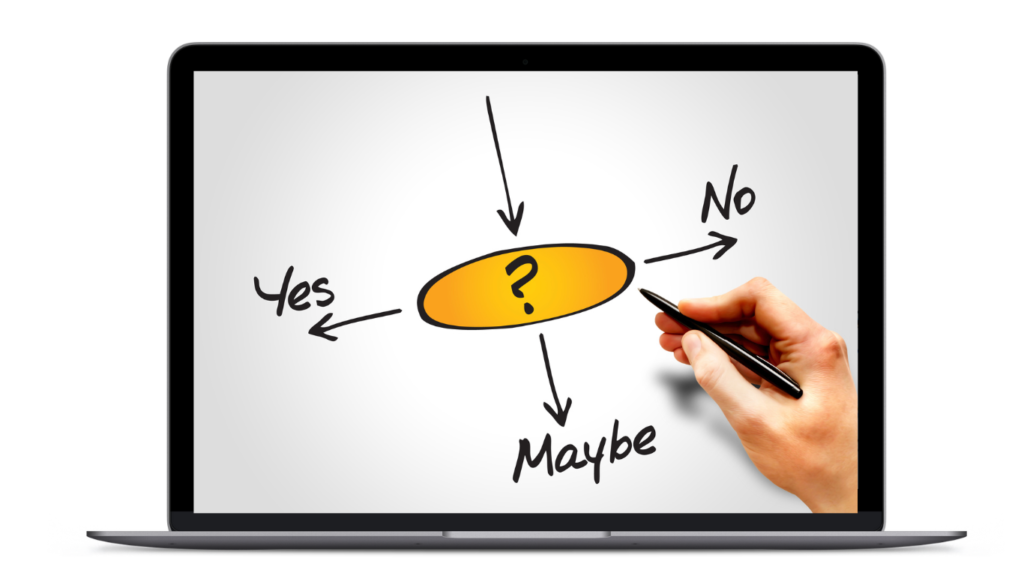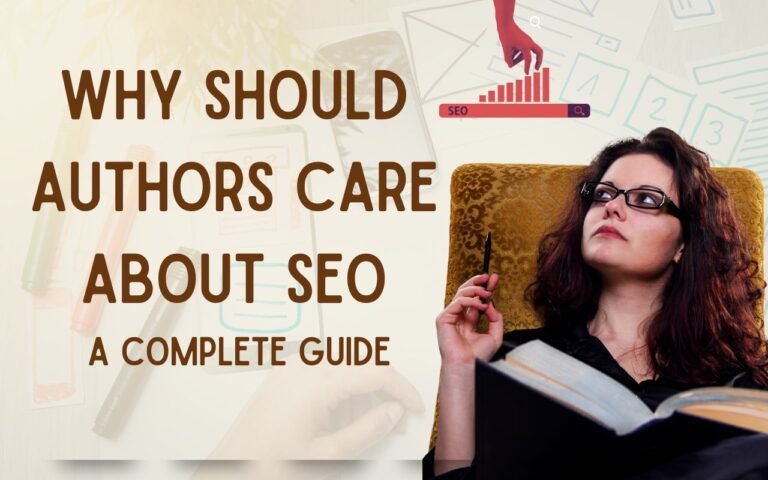Traditional Publishing vs. Self-publishing: Which Is Right for You?
“Should I publish on Amazon KDP or pursue traditional publishing? Which option is better in today’s market?”
This is one of the most common questions we hear from aspiring authors, and it’s understandable. The problem, however, is that the answer isn’t one-size-fits-all. There are a lot of factors to consider, and what works for one author may not work for another. The truth is, there’s no definite answer. If you do come across one, someone might be trying to sell you something. Traditional publishing vs. self-publishing is a puzzle that depends on your preferences, strengths, and circumstances. Add hybrid publishing into the mix, and it becomes even more of a challenge. The choice for 97% of authors is clear: Amazon KDP is the better path. For the 1%, traditional publishing is the obvious route. But what for the remaining 2% authors?
The reality is, it’s complicated for about 2% of authors. They are still thinking “Which is better—self-publishing or traditional?”
This article is for the 98% of authors who can confidently make this decision, and we’re here to help you quickly identify which path aligns with your goals, resources, and expectations. The goal here is to provide you with a clear overview of self-publishing and traditional publishing by outlining the pros, cons, and specifics so you can decide what works best for you. However, If you’re part of the 2% whose circumstances demand a more detailed breakdown, don’t worry—we’re preparing another guide that explains every tiny factor to help you with “How to Get a Book Published and Choose the Right Publishing Options”.
What Is the Difference Between Self-Publishing and Traditional Publishing?
There is one key difference to understand as an aspiring author between self-publishing and traditional publishing which comes down to ownership. That is:
- Self-publishing means the author retains full ownership of the book’s rights and royalties.
- Traditional publishing means the publisher owns the rights and royalties.
Everything else — like editing, marketing, distribution, and time to market — are simply additional factors that stem from this core difference.
However, When deciding between self-publishing and traditional publishing, it’s essential to look beyond just the surface-level differences. The core distinction lies in ownership: who controls the rights and royalties of the book. However, understanding the nuances of each publishing option is also important. It involves evaluating several additional factors, such as creative control, financial investment, and marketing efforts.
The table below breaks down key differences between self-publishing and traditional publishing, helping you see how each choice aligns with your personal goals, available resources, and long-term vision as an author.
| Feature | Self-Publishing | Traditional Publishing |
|---|
| Control | Full control over content and pricing | Limited control (publisher dictates terms) |
| Royalties | Higher (up to 70% for e-books) | Lower (10-20% for print, 25-30% for e-books) |
| Time to Market | Fast (a few weeks to months) | Slow (1-2 years) |
| Editing | Author hires editor | Publisher provides editorial services |
| Cover Design | Author hires designer | Publisher provides design |
| Marketing | Author handles all promotion | Publisher handles most marketing |
| Cost | Initial investment required (editor, design, marketing) | No upfront cost for the author |
| Distribution | Through self-publishing platforms (Amazon, IngramSpark) | Wide distribution through bookstores and retailers |
| Risk | Financial risk is on the author | Publisher assumes most of the risk |
A study by Written Word Media found that while 44% of self-published authors earned less than $1,000 annually, there’s a growing group of indie authors earning six-figure incomes. Success stories exist on both sides, but they are rarely overnight.
Who Should Consider Traditional Publishing…
- Authors Seeking Broad Distribution and Prestige: Traditional publishers have the infrastructure to distribute books widely in bookstores, libraries, and international markets. For authors who want to see their books on the shelves of major retailers and benefit from the prestige associated with traditional publishing, this is a key advantage.
- Authors Who Value Professional Guidance: Traditional publishers provide significant support in editing, marketing, cover design, and distribution. If you want to focus on writing and prefer to have experts handle the business side, traditional publishing might be the better option.
- Authors with a Niche Market or Unique Genre: Some genres or niche topics might not be viable in the self-publishing world due to the highly competitive nature of platforms like Amazon. Traditional publishers may be more willing to take a risk on such genres and have the resources to properly market them.
- Authors Who Prefer to Avoid Upfront Costs: Traditional publishing typically covers the costs of editing, design, and marketing. If you don’t have the financial resources to invest in these areas yourself, a traditional publisher may be the best option, as they take on these expenses and offer advances.
- Authors Interested in Long-Term Career Development: If you’re looking to establish a long-term career with the backing of a reputable publisher and don’t mind waiting longer for publication (since traditional routes can be slow), traditional publishing can offer career stability, professional development, and access to a large network of industry experts.
In simple words, Traditional Publishing is the Right Choice If…
- You’re Comfortable with Longer Timelines: Publishing traditionally can take 1–3 years.
- You Have a Pre-Existing Platform: Publishers are more likely to sign authors with an established audience.
- You’re Seeking Industry Validation: A traditional deal carries prestige and recognition.
- You Prefer to Focus Solely on Writing: Traditional publishers handle editing, design, and distribution.
Who Should Consider Self-Publishing…
- Authors Who Want Full Control: Self-publishing allows authors to have complete control over the content, pricing, cover design, and marketing of their books. If you want to make all decisions about your work without relying on a publisher’s input, self-publishing is ideal.
- Authors Who Want to Publish Quickly: Traditional publishing can be slow, with lengthy timelines from manuscript acceptance to publication. Self-publishing offers speed—authors can publish a book in as little as a few weeks once it’s ready. This is perfect for authors eager to get their work into readers’ hands quickly.
- Authors with a Strong Online Presence or Established Following: If you have a strong social media following or an established brand, self-publishing can allow you to directly reach your audience without relying on a publisher. Self-publishing gives you the flexibility to market directly to your readers, using your own platform.
- Authors Willing to Invest Time and Resources: Self-publishing can be financially rewarding, but it requires an investment of time, effort, and money in areas like editing, design, and marketing. If you’re prepared to wear multiple hats and take on the role of entrepreneur, self-publishing might be a good fit.
- Authors Who Want to Retain Higher Royalties: In traditional publishing, authors typically receive a small percentage of the royalties from book sales. With self-publishing, authors can retain a much larger share of the revenue. This is ideal for authors who are entrepreneurial-minded and want to maximize their income potential.
- Authors Interested in Flexibility and Creative Freedom: Self-publishing gives you the creative freedom to write what you want, when you want. There are no editorial restrictions or market demands to meet. If you’re passionate about a particular project and want to publish it exactly as you envision, self-publishing allows for that flexibility.
So, in simple words, Amazon KDP or Self-publishing is the Right Choice If…
- You Want Full Creative Control: From cover design to editing, you want the final say on every aspect of your book.
- You Prefer Faster Timelines: KDP allows you to publish in weeks, not years.
- You’re Focused on Profit Margins: Higher royalty rates mean more money per sale.
- You’re Willing to Handle Marketing: You understand that successful self-publishing often requires active promotion.
One of KDP’s standout features is its royalty structure. Authors can earn up to 70% royalties on eBooks priced between $2.99 and $9.99, a figure far above the typical 10-15% royalties offered by traditional publishers. But with great royalties comes great responsibility. Authors must wear multiple hats—writer, editor, cover designer, marketer, and more. While some authors enjoy this hands-on approach, others may find it overwhelming.
Traditional Publishing vs Self-Publishing Decision Tree

Choosing between self-publishing and traditional publishing is a significant decision for any author. Each path has its own set of benefits and challenges, and the right choice depends on your individual goals, resources, and priorities. Both options offer unique advantages, but they also come with different challenges as mentioned above.
To help guide you through this decision-making process, we’ve created a decision tree that outlines key questions you can ask yourself. This will help you weigh your priorities, whether it’s maintaining control, earning royalties, or maintaining the credibility and distribution power of traditional publishers.
Answering these questions will bring clarity to your publishing journey and provide more details about which option might be the best fit for you.
A Checklist….
| Question | If Yes then choose | If No Then | Unsure |
|---|
| 1. Do you want to maintain full control over your book? | Self-publishing | Go to Question 2 | Go to Question 3 |
| 2. Do you want professional support (editing, design, marketing)? | Traditional publishing | Self-publishing | Go to Question 4 |
| 3. Do you prefer the freedom to publish at your own pace? | Self-publishing | Traditional publishing | Go to Question 5 |
| 4. Is earning higher royalties important to you? | Self-publishing | Traditional publishing | Go to Question 6 |
| 5. Are you comfortable with handling your own marketing and promotion? | Self-publishing | Traditional publishing | Go to Question 7 |
| 6. Do you want your book to be widely distributed through bookstores and libraries? | Traditional publishing | Self-publishing | Go to Question 8 |
| 7. Do you prefer the professional credibility and industry recognition of traditional publishers? | Traditional publishing | Self-publishing | Go to Question 9 |
| 8. Are you willing to wait for a longer time to see your book published? | Traditional publishing | Self-publishing | Go to Question 10 |
| 9. Do you have access to a literary agent or major publishing houses? | Traditional publishing | Self-publishing | — |
| 10. Do you have the financial resources to manage the upfront costs (editor, design, marketing)? | Self-publishing | Traditional publishing | — |
Once you’ve gone through the decision tree, you should have a clearer idea of which publishing route suits your needs. Self-publishing offers more control and potentially higher royalties, but it requires you to handle everything from editing to marketing. Traditional publishing, on the other hand, provides professional support and a wider distribution network, though it often means giving up some control and waiting longer for your book to hit the shelves.
Ultimately, The decision depends on what’s most important to you as an author. Whether you choose self-publishing or traditional publishing, both paths can lead to success with the right approach, resources, and mindset. Consider your priorities carefully and make a decision that aligns with your long-term goals as an author.
Now it’s time to Choose Your Path…..
Stephen King once said, “Talent is cheaper than table salt. What separates the talented individual from the successful one is a lot of hard work.” This rings true regardless of whether you’re publishing through Amazon KDP or pursuing a traditional deal—the path to success in publishing is a long game.
The choice between self-publishing and traditional publishing is not just about numbers and contracts. It’s about what aligns with your goals, strengths, and vision for your writing career. For most authors, self-publishing proves to be the ideal choice. With over 97% of self-published authors finding success through this route, it offers unparalleled control over the creative process. Authors can make decisions about content, design, pricing, and distribution without relying on third parties.
Also, Financially, self-publishing is more rewarding, as authors keep a larger share of royalties compared to traditional publishing. It also allows for faster publication, bypassing the lengthy approval processes associated with traditional routes. Plus, it provides the opportunity for direct engagement with readers, helping authors build a loyal following and respond to feedback in real-time. While traditional publishing still works for some authors, the freedom, better royalties, and quicker results of self-publishing make it the best option for most today.
For deeper insights on traditional publishing vs self publishing, reports from Publishers Weekly and the Author Earnings Report can offer valuable perspectives on the industry that further helping authors decide which path best suits their goals and vision.
Week 1: The Fundamentals of Amazon KDP Success
Articles List of 45 Days KDP Publishing Series
Day 1: The future of publishing trends and insights in 2025
Day 2: How Book Genres and Target Audience Can Shape Your KDP Success as an author
Day 3: How to find a Profitable Niche for your KDP Success
Day 4: Why should Authors care about SEO: Top 6 Strategies
Day 5: Traditional Publishing vs. Self-publishing: Which Is Right for You?








One Comment